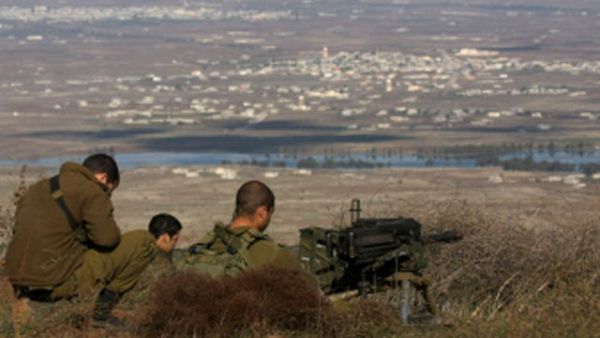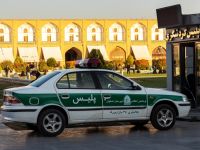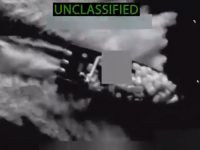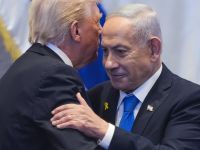Possible tit-for-tat incidents Tuesday involving Israeli and Lebanese soldiers and unknown gunmen point toward rising tensions along the southeast sector of the Blue Line and the emerging linkage between south Lebanon and the Golan Heightsas a joint arena of confrontation.
Israeli troops advanced 20 meters across the Blue Line at Bastara in the Shebaa Farms Tuesday and later fired shots at Lebanese soldiers inspecting the violation, according to a statement by the Lebanese Army. Bastara was the location of a Hezbollah roadside bomb attack in March last year.
Later in the day, an Israeli soldier was wounded in a shooting incident near Qunaitra in the Golan Heights. There was no Israeli retaliation, but, according to Israeli media reports, the shooting is being treated as deliberate rather than an accidental stray round from ongoing fighting around Qunaitra.
There is no evidence that the shooting on the Golan was a reprisal for the earlier Blue Line breach by Israeli troops. But the coincidence of the two events fits into a clear pattern that has emerged since December 2013 in which parts of the Golan are used as a locus of deniable retaliation for developments involving Hezbollah or the Blue Line in Lebanon.
Allowing Iran and Hezbollah to gain a stronger foothold in the Golan is one of the goals of the current offensive underway in southern Syria. The offensive is named in honor of the “martyrs of Qunaitra,” a reference to the six Hezbollah fighters, including two field commanders, and Iranian Gen. Mohammad Allahdadi, killed in January in an Israeli drone strike.
Combat operations are being directed by the Iranian Revolutionary Guard Corp with much of the attacking force composed of IRGC soldiers, Hezbollah fighters and Shiite auxiliary forces from Iraq and Afghanistan. Social media have posted numerous photos and video clips purporting to show dead Shiite militants, including Hezbollah and Afghani fighters and at least two IRGC officers.
Abu Ali, a veteran Hezbollah fighter who has served multiple tours in Syria, confirmed IRGC leadership of the southern Syria offensive and that Iranian troops were involved.
“Iran will be so close to the Israelis that it will no longer need long-range missiles to hit them,” Abu Ali said. “The Golan is going to be a new front line.”
He added that tunnel and bunker construction in the Golan has been underway for a year, apparently an attempt to replicate the facilities Hezbollah built in the south before 2006. He added that Allahdadi was conducting an inspection tour of the new facilities when he was killed by the Israeli drones.
Abu Ali declined to go into details about the infrastructure work, but said “think of Maroun al-Ras ... We cannot fight the Israelis in the open as we will not last a minute, that’s why we use tunnels.”
Hezbollah constructed substantial bunker and tunnel networks around the hilltop southern village of Maroun al-Ras and used them to hamper the Israeli army’s advance in the 2006 war.
The offensive in southern Syria is under close scrutiny by the Israelis, who are concerned that a new front is being planned along their northeast border at a time when Hezbollah has been showing more assertiveness along the Blue Line.
A security source in south Lebanon said that the Israelis assess that “operational surveillance” by Hezbollah along the Blue Line “has reached 2006 levels.”
For months, Israel has been complaining that UNIFIL is not doing enough to curb what it alleges are Hezbollah’s breaches of Resolution 1701. In January, Israel delivered to the United Nations Security Council a detailed list of what it said was 1,233 “violations” of 1701 from the beginning of June 2014 until the end of December. It was not the first report of its kind but was the most detailed and covered the longest time period.
The report appears to have been issued to refute a comment made at the end of December by UNIFIL commander Maj. Gen. Luciano Portolano that the peacekeepers had not witnessed the transfer of weapons into the southern border district.
Some of the alleged “violations” contained in the report are banal and clearly not breaches of 1701. They include an incident on Aug. 1 in which two men were observed “placing a Hezbollah flag and moving it to another point and performing provocative behavior” toward an Israeli army patrol.
However, a careful analysis of the data reveals that of the 1,233 “violations,” 643 of them refer to armed men spotted close to the Blue Line.
The report makes no mention of the type of weapons carried, raising the possibility that some could be local civilians carrying shotguns (despite a ban on hunting south of the Litani River) or armed military intelligence personnel who customarily wear plain clothes.
Of the 643 sightings, 183 of them relate to armed men spotted in the Shebaa Farms area.
The highest number of armed men observed in a single month in the vicinity of the Shebaa Farms was in September, when Hezbollah was preparing the ground for its Oct. 7 roadside bomb ambush in the Farms, a retaliation for the death a month earlier of a party engineer who was dismantling a booby-trapped Israeli wire-tapping device when it exploded.
On three occasions, armed men were seen slipping across the Blue Line in the Shebaa Farms. One of the incidents was on Oct. 5 during which Israeli troops shot and wounded a Lebanese soldier. The other two occasions were on Dec. 1 and Dec. 23.
Intriguingly, Lebanese newspapers on Dec. 2 reported loud explosions and bursts of machine-gun fire coming from the Shebaa Farms the previous day, but interpreted it as a routine Israeli army exercise.
Elsewhere along the Blue Line, the report reveals clusters of activity involving “armed men” or “Hezbollah recce [Reconnaissance] patrols” occurring in several distinct locations – west of Aita Shaab, a 10-kilometer stretch between Yaroun and Aitaroun, east of Mais al-Jabal and a 2.5-kilometer stretch between the Israeli settlement of Manara and just north of Sheikh Abbad hill, opposite Houla.
Israel breaches Resolution 1701 on a near daily basis mainly with its overflights in Lebanese airspace, a practice that is routinely condemned by the U.N.
It may be no coincidence that the very first of these detailed Israeli reports on alleged Lebanese violations of 1701 was released on Aug. 13, 2013 – six days after Israeli commandos fell into a Hezbollah bomb ambush after they crossed into Lebanese territory for a distance of 400 meters north of the Blue Line.








